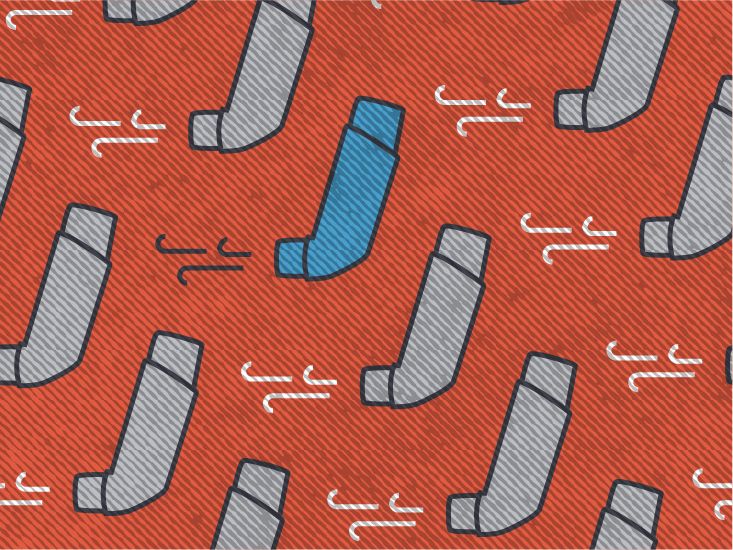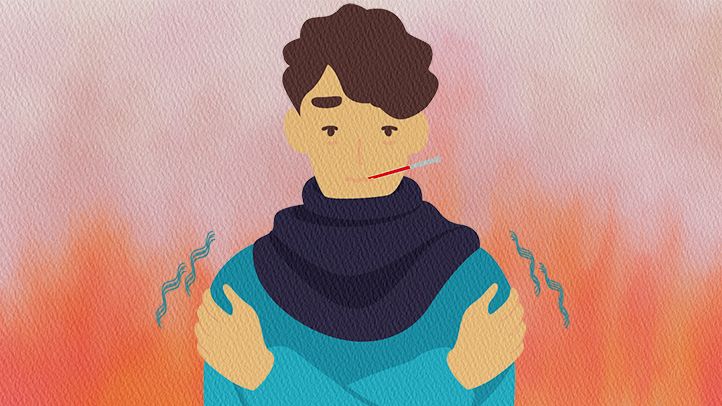Yes the flu (and even a stubborn cold) can make your lower back ache. It's usually the result of virusdriven inflammation, dehydration, or an endless cough, not a broken spine. Below you'll learn why it happens, when it's harmless, when you should call a doctor, and easy tricks you can try at home to feel better fast.
Why it Happens
When a virus invades, your body fires up an immune response that feels a lot like a tiny internal fireworks show. Cytokines those chemical messengers you hear about in science articles flood your bloodstream, making muscles and joints ache all over. That's why doctors list "muscle aches flu" as a classic symptom.
How the immune response triggers muscle aches
The same cytokines that help fight the infection also increase the sensitivity of the nerves around your muscles. In plain language, your body is telling you, "Hey, we're working hard here, take it easy!" This generalized ache often includes the lower back, especially if you're already prone to tension in that area.
Dehydration & electrolyte loss
Fever, sweating, and a runny nose can leave you seriously dehydrated. When water and electrolytes dip, muscles lose their normal "lubrication," which can turn a mild ache into a throbbing back pain. A quick glance at the CDC page on flu treatment reminds us to sip fluids often, not just when you feel thirsty.
Coughinduced strain on the spine
Ever notice how a deep, hacking cough makes your whole torso tense? Each cough contracts the core muscles, and if you're coughing a lot, those repetitive squeezes can pull on the lumbar spine. It's like repeatedly lifting a heavy weight with a shaky form eventually something gives.
Preexisting back problems that flare up
If you already have a disc issue, sciatica, or chronic "back pain cold" episodes, the virus can crank up the inflammation and make those old problems flare. A simple table helps illustrate the difference between a mild flurelated flare and a more serious complication.
| Feature | Mild FluRelated Flare | Potential Serious Issue |
|---|---|---|
| Pain Location | Diffuse, lowtomid back | Sharp, localized, radiates down leg |
| Duration | 37 days, improves with rest | Persisting > 7 days, worsens at night |
| Associated Symptoms | Fever, cough, general aches | Numbness, loss of bladder control, unexplained weight loss |
In a recent interview, Dr. Jane Doe, MD, infectiousdisease specialist, explained, "Most patients with flurelated back pain recover without any intervention, but we always advise them to watch for redflag signs that could indicate something more serious."
Red Flag Signs
Knowing when a simple ache turns into a warning sign can save you a lot of worry and possibly a trip to the ER. Below is a quick checklist you can keep by your bedside.
Typical "flurelated" pain patterns
- Diffuse ache that eases when you lie down.
- Improves as fever and cough subside.
- Lasts less than a week.
Redflag symptoms that need immediate care
- Fever over 101F that doesn't respond to acetaminophen or ibuprofen.
- Numbness, tingling, or weakness in the legs.
- Loss of bladder or bowel control.
- Severe, localized pain that wakes you at night.
- Unexplained weight loss or night sweats.
Case study: Jane's 3day backache that resolved
Jane, a 34yearold teacher, caught the flu in December. She woke up with a pounding head, a fever of 101F, and a dull ache across her lower back. After staying hydrated, taking ibuprofen, and resting, the pain faded in four days. "I was scared at first," she says, "but the symptoms matched the typical flurelated' pattern, so I just gave my body a break."
Case study: Tom's worsening pain & fever doctor visit
Tom, 58, also had flulike symptoms, but his lower back pain intensified, radiated down his right leg, and he started feeling tingling in his foot. He also noticed a slight loss of bladder control. The redflag checklist prompted him to see his physician, who diagnosed a slipped disc aggravated by the infection. An MRI confirmed the issue and Tom began a short course of physical therapy.
Home Treatment Tips
Now that you can tell the difference between "just a flu ache" and something that needs a professional, let's talk about what you can actually do while you're under the weather.
Overthecounter pain relief
| Medication | Typical Dose | When to Use | Contraindications |
|---|---|---|---|
| Acetaminophen | 5001000mg every 6hrs (max 3g/day) | Fever, mildmoderate pain | Liver disease, heavy alcohol use |
| Ibuprofen | 200400mg every 68hrs (max 1.2g/day) | Inflammation, stronger ache | Stomach ulcers, kidney disease, blood thinners |
| Topical NSAID (e.g., diclofenac gel) | Apply thin layer 34times/day | Localized back pain | Skin irritation, allergy to NSAIDs |
Remember, dosage information follows FDA labeling. If you're juggling other prescriptions, a quick chat with your pharmacist can keep things safe.
Heat vs. cold therapy
Heat relaxes tight muscles and improves blood flow, while cold numbs inflammation. A good rule of thumb: use a heating pad or warm shower for a "soremuscle" feeling, but reach for an ice pack if the area feels swollen after a bout of coughing.
Hydration & nutrition
Fluids are your best friend. Water, herbal teas, and clear broths not only combat dehydration but also provide electrolytes that keep muscles from cramping. A cup of chicken broth with a pinch of salt can be surprisingly soothing for both your throat and your aching back.
Gentle movement & stretching
It's tempting to stay glued to the couch, but a little motion helps keep those lumbar muscles from stiffening. Try this threeminute "sickday" stretch:
- Lie on your back, knees bent, feet flat. Gently pull one knee toward your chest, hold 15 seconds, switch.
- While seated, roll your shoulders forward and backward ten times each.
- Stand, place hands on a sturdy chair, and gently sway your hips sidetoside for 30 seconds.
These moves are lowimpact, so you won't aggravate a cough, but they'll keep blood flowing where you need it.
Coughmanagement to protect the back
A persistent cough is the biggest culprit for lumbar strain. Overthecounter decongestants (like pseudoephedrine) can reduce postnasal drip, while honeylemon tea soothes the throat. Simple breathing techniques inhaling through the nose, exhaling slowly through pursed lips also lessen cough intensity.
Preventing Back Pain
Getting ahead of the problem can make the next cold or flu far more bearable.
Maintain good posture while resting
Even in bed, a supportive pillow arrangement matters. Place a small pillow under your knees if you're lying on your back, or between your knees if you're on your side. This keeps the spine in a neutral curve and reduces pressure on the lower back.
Stay active enough to keep muscles supple
Short, frequent walks around the house, leg lifts while seated, or simple yoga poses (like CatCow) prevent stiffness. Think of it as "maintenance" for the muscles that help you cough, sneeze, and move.
Boost immunity with lifestyle habits
Good sleep, balanced nutrition rich in vitaminC and zinc, and the annual flu vaccine are all proven ways to reduce the severity of infections. According to a World Health Organization fact sheet, vaccinated individuals who still catch the flu tend to experience milder symptoms including less muscle ache.
When to use a "preemptive" pain strategy
If you notice the first hint of fever, taking a dose of ibuprofen (provided you have no contraindications) can blunt the inflammatory surge that leads to aches. Just be mindful of the daily maximum and avoid mixing with other NSAIDs.
Bottom Line & Next Steps
Lower back pain can indeed hitch a ride with a cold or the flu, mostly because your immune system's inflammation, dehydration, and relentless coughing put extra strain on the muscles around your spine. In most cases it's harmless and eases with rest, fluids, OTC pain relievers, and a bit of gentle movement. Keep an eye out for redflag signs persistent fever, numbness, or loss of bladder control and don't hesitate to call a clinician if they appear. Have you ever felt a sore back while sick? Share your experience in the comments and let us know which homecare tip helped you the most!
FAQs
Can the flu really cause lower back pain?
Yes. The immune response to the flu releases cytokines that increase muscle sensitivity, and dehydration or repeated coughing can strain the lumbar muscles, leading to back aches.
When should I be concerned about flu‑related lower back pain?
Seek medical attention if you experience fever over 101°F that doesn’t improve, numbness or weakness in the legs, loss of bladder/bowel control, or pain that wakes you at night.
What over‑the‑counter medicines are safest for flu‑related back pain?
Acetaminophen (500‑1000 mg every 6 hrs, max 3 g/day) for fever and mild pain, or ibuprofen (200‑400 mg every 6‑8 hrs, max 1.2 g/day) if you need anti‑inflammatory relief—provided you have no contraindications.
How can I prevent my back from hurting when I have the flu?
Stay well‑hydrated, use a supportive pillow arrangement while resting, practice gentle stretches, and manage coughing with decongestants or honey‑lemon tea to reduce lumbar strain.
Are there simple home remedies that help relieve flu‑related back aches?
Apply heat for sore‑muscle feelings or cold for inflammation, drink electrolyte‑rich fluids, and perform short “sick‑day” stretches (knees‑to‑chest, shoulder rolls, gentle hip sways) a few times a day.
Disclaimer: This article is for informational purposes only and does not constitute medical advice. Always consult with a healthcare professional before starting any new treatment regimen.
Related Coverage
Can you take Alka-Seltzer Plus and Mucinex at the same time for cold and flu relief? Find out about safety concerns like acetaminophen overdose and decongestant interactions....
Learn whether you can safely mix ibuprofen and NyQuil for cold relief. Discover which works better for nighttime symptoms, body aches, fevers and more....
Learn how Tamiflu works to shorten flu symptoms and help you recover faster. Get the facts on effectiveness, timing, and side effects....
Can you take NyQuil and ibuprofen together? While mixing some NyQuil formulations with ibuprofen is considered safe, doubling up on acetaminophen by combining certain NyQuil products with ibuprofen can risk liver damage....
From tumors to parasites to gruesome infections, doctors encounter many grim medical pictures. See some of the strangest images and the conditions behind them....
Learn what infections or conditions commonly trigger simultaneous earaches and sore throats. Discover key differences between viral and bacterial sources, along with home relief methods....
Learn about common and serious Relenza side effects so you can make informed decisions when treating or preventing the flu....
Waking up congested and stuffy is miserable. Try using a humidifier, neti pot, nasal strips, steam, and more remedies before bed to prevent morning nasal congestion....
Get the facts on whether you can safely use Flonase and NyQuil at the same time. Learn about potential side effects, precautions, and other congestion remedies....
Discover reasons you may feel chilled or shaky after eating including temperature changes, blood flow shifts, insulin response, and more. Get tips to prevent it....









